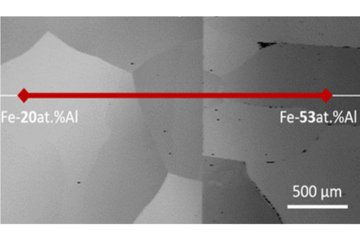All genres
1561.
Thesis - PhD
Understanding the interplay between thermodynamics and surface kinetics in the growth of dilute nitride alloys from first principles. Dissertation, University of Paderborn, Paderborn, Germany (2010)
1562.
Thesis - PhD
Implementation and application of continuum elasticity theory and a k.p-model to investigate optoelectronic properties of semiconductor nanostructures. Dissertation, University of Paderborn, Paderborn, Germany (2010)
1563.
Thesis - PhD
Towards ab initio assisted materials design: DFT based thermodynamics up to the melting point. Dissertation, University of Paderborn, Paderborn, Germany (2009)
1564.
Thesis - PhD
Development and Application of the S/PHI/nX Library. Dissertation, University of Paderborn, Paderborn, Germany (2009)
1565.
Thesis - PhD
DFT Study of Alkanethiol Self-assembled Monolayers on Gold(111) Surfaces. Dissertation, Ruhr-Universität-Bochum, Fakultät für Physik und Astronomie, Bochum, Germany (2009)
1566.
Thesis - PhD
Implementierung und Test des Variationellen EXX-Verfahrens. Dissertation, University of Paderborn, Paderborn, Germany (2009)
1567.
Thesis - PhD
Ab initio STM and STS simulations on magnetic and nonmagnetic metallic surfaces. Dissertation, University of Paderborn, Paderborn, Germany (2008)
1568.
Thesis - Master
Algorithms for optimal chemical ordering. Master, University of Passau (2021)
1569.
Thesis - Master
Concentration-dependent finite temperature effects in metallic alloys. Master, Ruhr-Universität Bochum (2021)
1570.
Thesis - Master
Thermodynamics of binary alloys at atomistic scale. Master, Ruhr-Universität Bochum (2020)
1571.
Thesis - Master
Machine learning the formation of defect phases in aluminium alloys. Master, Ruhr-Universität Bochum (2020)
1572.
Thesis - Master
Fully anharmonic self-diffusion coefficients using the Finite-Temperature String method. Master, Ruhr-Universität Bochum (2019)
1573.
Thesis - Master
Phase diagrams derived from optimized empirical potentials. Master, Ruhr-Universität Bochum (2019)
1574.
Thesis - Master
Automated Calculations for Charged Point Defects in Magnesium Oxide and Iron Oxides. Master, Ruhr-Universität Bochum, GermanyRuhr-Universität Bochum, Bochum, Germany (2016)
1575.
Thesis - Master
Ab initio investigations on the energetics and kinetics of defects in Fe–Al alloys. Master, Ruhr-Universität Bochum, Bochum, Germany (2014)
1576.
Thesis - Master
Chemical Trends in the Yttrium-Oxide Precipitates in Oxide Dispersion Strengthened Steels: A First-Principles Investigation. Master, Ruhr-Universität Bochum, Bochum, Germany (2012)
1577.
Thesis - Master
Ab-initio study of formation and interaction energies in steel and their relations to the solubility limit of carbon in austenite and ferrite. Master, RWTH-Aachen, Aachen, Germany (2007)
1578.
Thesis - Bachelor
Combined Ab Initio and Kinetic Monte-Carlo Studies on Nano-Precipitates in Steels. Bachelor, Ruhr-Universität, Bochum, Germany (2010)
1579.
Report
Ab-initio simulation and experimental validation of beta-titanium alloys. (2008)
1580.
Issue
Advanced Calculations for Defects in Solids - Electronic Structure Methods - Preface (Special issue). Physica Status Solidi B 248, (1) (2011), 17-18 pp.











